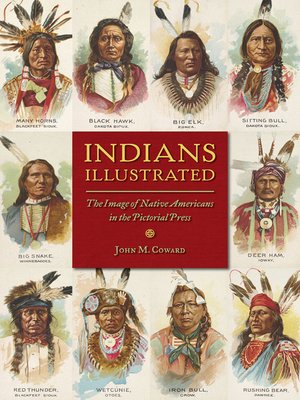Indians Illustrated
ebook ∣ The Image of Native Americans in the Pictorial Press · The History of Media and Communication
By John M Coward

Sign up to save your library
With an OverDrive account, you can save your favorite libraries for at-a-glance information about availability. Find out more about OverDrive accounts.
Find this title in Libby, the library reading app by OverDrive.



Search for a digital library with this title
Title found at these libraries:
| Library Name | Distance |
|---|---|
| Loading... |
After 1850, Americans swarmed to take in a raft of new illustrated journals and papers. Engravings and drawings of "buckskinned braves" and "Indian princesses" proved an immensely popular attraction for consumers of publications like Frank Leslie's Illustrated Newspaper and Harper's Weekly . In Indians Illustrated , John M. Coward charts a social and cultural history of Native American illustrations—romantic, violent, racist, peaceful, and otherwise—in the heyday of the American pictorial press. These woodblock engravings and ink drawings placed Native Americans into categories that drew from venerable "good" Indian and "bad" Indian stereotypes already threaded through the culture. Coward's examples show how the genre cemented white ideas about how Indians should look and behave—ideas that diminished Native Americans' cultural values and political influence. His powerful analysis of themes and visual tropes unlocks the racial codes and visual cues that whites used to represent—and marginalize—native cultures already engaged in a twilight struggle against inexorable westward expansion.|
Cover
Title Page
Copyright
Contents
Acknowledgments
Introduction: Illustrating Indians in the Pictorial Press
Chapter 1. Posing the Indian: Native American Portraits in the Illustrated Press
Chapter 2. Illustrating Indian Lives: Difference and Deficiency in Native American Imagery
Chapter 3. The Princess and the Squaw: The Construction of Native American Women in the Pictorial
Chapter 4. Making Images on the Indian Frontier: The Adventures of Special Artist Theodore Davis
Chapter 5. Illustrating the Indian Wars: Fact, Fantasy, and Ideology
Chapter 6. Making Sense of Savagery: Native American Cartoons in the Daily Graphic
Chapter 7. Remington's Indian Illustrations: Race, Realism, and Pictorial Journalism
Chapter 8. Visualizing Race: Native American and African American Imagery in Frank Leslie's
Conclusion: Illustrating Race, Demonstrating Difference
Notes
Index
|
"Indians Illustrated is a good read that strongly contributes to our knowledge of American Indians' depictions and stereotyping while bringing the world of nineteenth-century printed press into our own homes." —American Indian Quarterly
"In Indians Illustrated, Coward not only has written a book that clearly and decisively achieves the primary objective of providing a history of the development and consequences of Native American stereotypes, but he also provides a framework useful for anyone who seeks to understand stereotyping of any group in American media."—Journalism History
"Coward provides a fascinating look at how powerful the visual image can be on the development of cultural attitudes."—Jhistory
|John M. Coward is an associate professor of communication at the University of Tulsa. He is the author of The Newspaper Indian: Native American Identity in the Press, 1820–90.
"In Indians Illustrated, Coward not only has written a book that clearly and decisively achieves the primary objective of providing a history of the development and consequences of Native American stereotypes, but he also provides a framework useful for anyone who seeks to understand stereotyping of any group in American media."—Journalism History
"Coward provides a fascinating look at how powerful the visual image can be on the development of cultural attitudes."—Jhistory
|John M. Coward is an associate professor of communication at the University of Tulsa. He is the author of The Newspaper Indian: Native American Identity in the Press, 1820–90.







